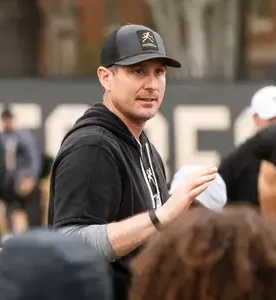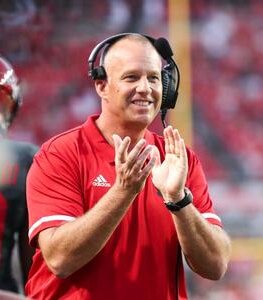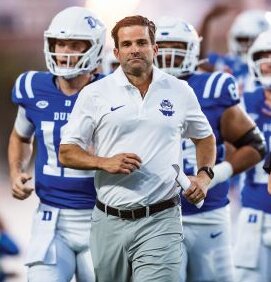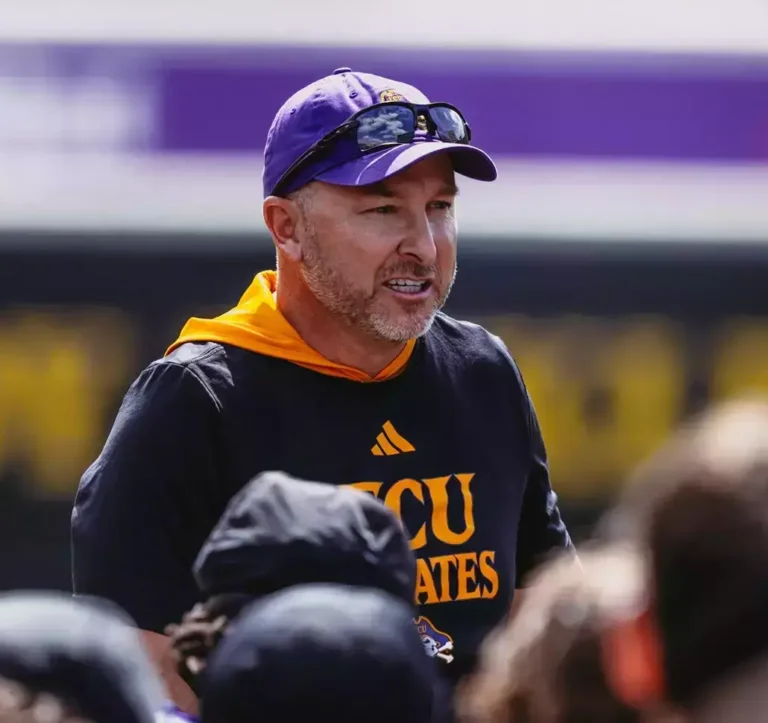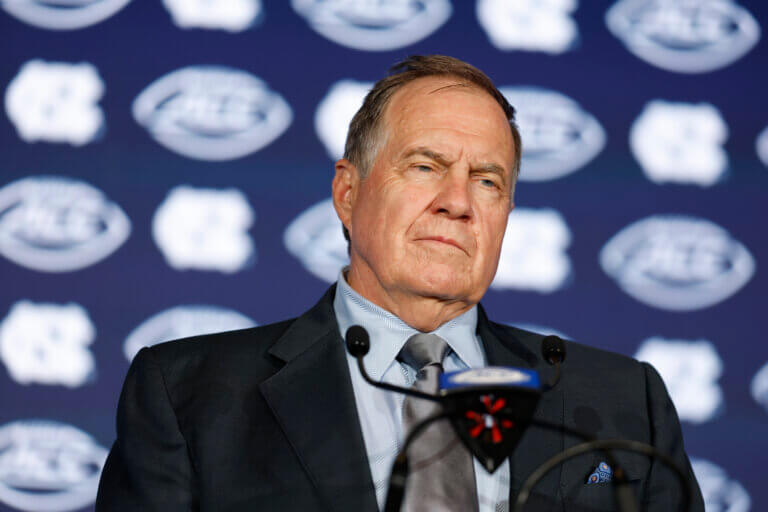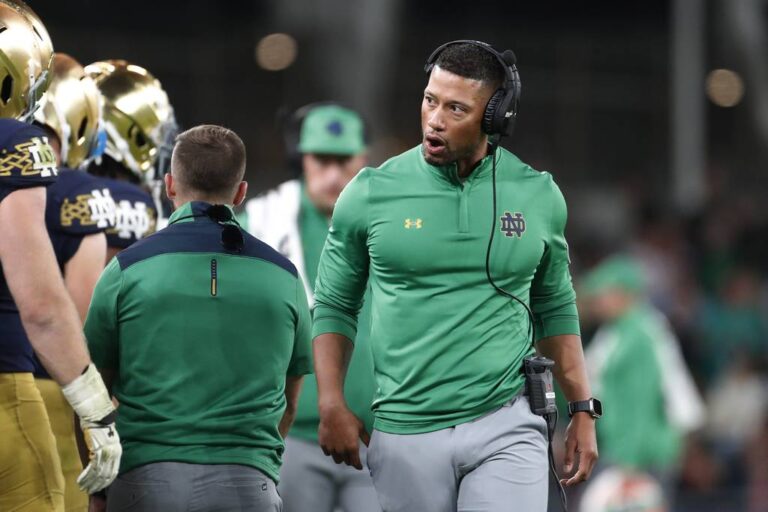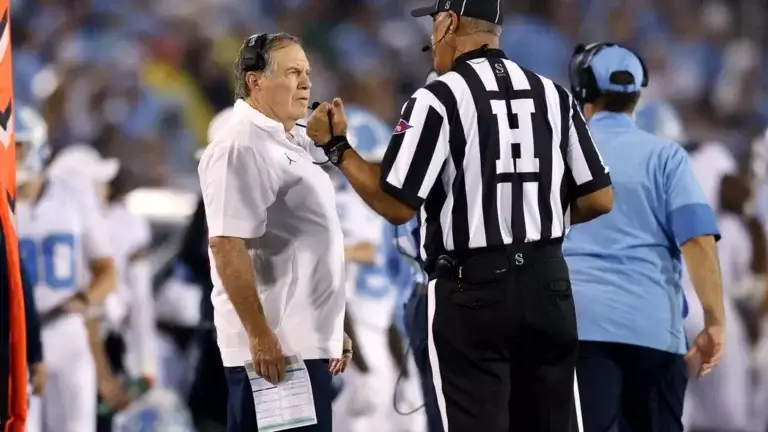How Did First-Year Wake Coach Jake Dickert
Start Faster Than UNC’s New Guy, Bill Belichick?


By David Glenn
North Carolina Sports Network
(last updated Nov. 13, 2025)
When North Carolina visits Wake Forest on Saturday (4:30 p.m., The CW), the 4-5 Tar Heels will be a six-point underdog against the 6-3 Demon Deacons.
Legendary coach Bill Belichick, an eight-time Super Bowl champion, will miss a bowl game in his college coaching debut unless he can lead his team to victories in at least two of its final three regular-season games: at Wake, home against Duke (5-4), at NC State (5-4).
Wake Forest coach Jake Dickert, a relative no-name who had gone just 23-20 during his three and a half seasons leading the Washington State program, already has the Demon Deacons bowl-eligible, with six victories. If his team sweeps its final three regular-season games, against UNC, Delaware (an FCS team) and Duke, he might be voted the ACC Coach of the Year.
Both Belichick and Dickert were hired last December, so it’s not as if either coach got a head start on building his new program. In fact, UNC announced its hiring of Belichick on Dec. 11, a full week before Wake announced Dickert as its new leader.
So what happened? How did the Demon Deacons manage such a strong start that they have spent much of this season as the ACC’s football darlings, whereas the Tar Heels stumbled to an ugly 2-5 start before their recent victories over struggling Syracuse and Stanford squads?

There are multiple factors in the answers to those questions, but the explanation begins with players. As the old saying goes, these ongoing stories have been more about the Jimmys and the Joes than about the Xs and the Os.
In two very important areas, Dickert has had massive advantages over Belichick, and there’s little Belichick or his staff could have done at any point to change that.
First, last December, Dickert had access to an extremely important subset of players in the NCAA transfer portal: his own guys (at Washington State). There is no simpler or more reliable form of player evaluation than a situation in which a coach is assessing someone he has spent countless hours with, in both football and personal settings, over a year or multiple years.
Having spent most of the past half-century in the NFL, of course, Belichick personally had no such built-in talent pipeline.
Dickert brought six Washington State players with him to Winston-Salem, and five of them have had huge impacts for Wake Forest this season.
Redshirt freshman Chris Barnes, a 5-foot-7, 168-pound speedster, quickly has become one of the more dangerous wide receivers and return men in the ACC. Among all freshmen nationally, he ranks among the leaders in both all-purpose yards (792) and receiving yards (504). In Wake’s 39-14 win over Oregon State, Barnes had three catches for 102 yards and three touchdowns.
Two more Washington State transfers, placekicker Connor Calvert and wide receiver/return man Carlos Hernandez, made two of the most crucial plays of Wake’s entire season. On Oct. 25, with the difference between a win and a loss resting on his foot, Calvert booted a 50-yard field goal as time expired to lift the Deacons to a 13-12 win over SMU. On Nov. 8, during a low-scoring grinder against Virginia, Hernandez returned a punt 88 yards for the game’s only touchdown as the Deacs beat the Cavaliers 16-9.
Meanwhile, a pair of fifth-year seniors, center Devin Kylany and right tackle Fa’alili Fa’amoe, are considered the Demon Deacons’ best offensive linemen.
UNC did manage a miniature version of the bring-your-own-guys transfer portal pipeline, with defensive coordinator Steve Belichick (formerly of Washington) luring cornerback Thaddeus Dixon and linebacker Khmori House from the Huskies. They have become two of the Tar Heels’ best players, although Dixon has missed the last four games with an injury.

The other major advantage Dickert has had over Belichick this season boils down to this: In terms of returning starters, former Wake coach Dave Clawson left behind a lot more proven commodities and building blocks for Dickert than ex-UNC coach Mack Brown left for Belichick.
Again, it’s not even close.
Eleven players who had been regular starters for Clawson are now playing for Dickert, most as first-teamers and a few as contributing backups: safety Nick Andersen, running back Demond Claiborne, long snapper Will Cobb, kicker Matthew Dennis, linebacker Dylan Hazen, tight end Harry Lodge, nose guard Zach Lohavichan, wide receiver Micah Mays Jr., nickel back Davaughn Patterson, offensive guard George Sell and defensive end BJ Williams.
Andersen is a sixth-year senior, a returning All-ACC player, a four-year starter and the leader of Wake’s outstanding defense, which is by far the strongest part of its team this season. Claiborne is considered by many NFL scouts among the top running back prospects in the entire country. Hazen is a three-year starter. Andersen, Claiborne and Patterson rank among the Deacons’ top All-ACC candidates this season.
The only 2025 UNC players who were regular starters for Brown are senior cornerback Marcus Allen, sophomore guard Aidan Banfield, sixth-year senior tackle Austin Blaske, junior nickel back Kaleb Cost, senior punter Tom Maginness and fifth-year senior wide receiver Kobe Paysour.
Allen has been the weakest link in UNC’s starting secondary all year. Banfield lost his starting job at midseason. Blaske (because of injuries) and Paysour have been only part-time starters this season. None of those Brown holdovers is considered a serious All-ACC candidate.

In some ways, these Wake Forest and UNC teams look a lot alike.
Both have struggled offensively, with subpar quarterback play and extremely inconsistent passing games.
The Demon Deacons have been outstanding defensively all season, and the Tar Heels’ dramatic improvement in that regard over the past month now has them right there with the Deacons, ranked among the top five defenses in the ACC (each yielding only 20-21 points per game).
Their starting foundations, however, were very, very different, and that story goes a long way toward explaining why the “no-name” coach has had a much stronger start than the future Hall of Famer.










